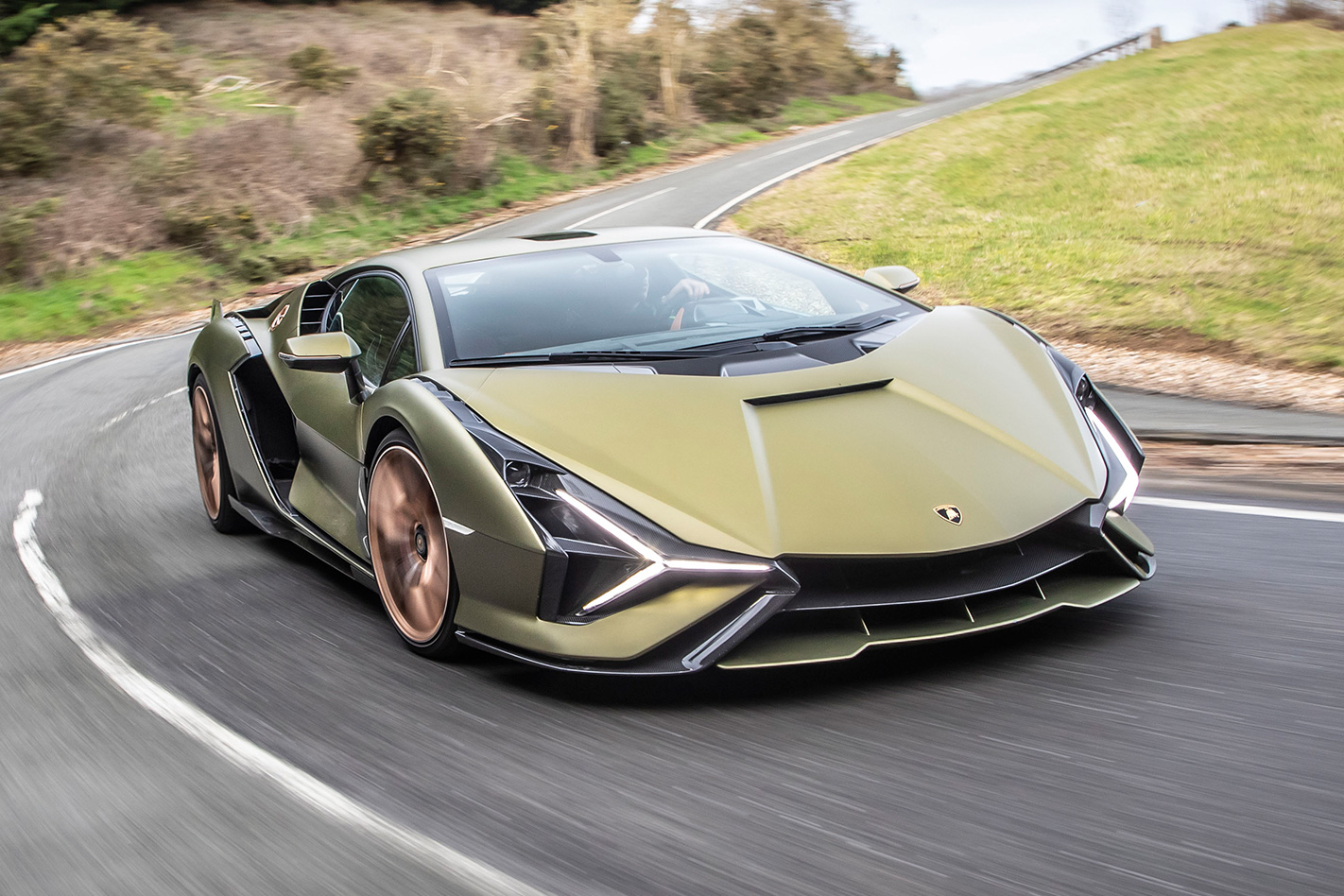Corsa mode, 80km/h, second gear. Punch the throttle. Instant weapons-grade thrust, and the booming snarl of the mighty 6.5-litre V12 morphs into a spine-tingling metallic shriek above 7000rpm. Three rapid tugs on the right-hand paddle: third… fourth… fifth… The frantic rush of acceleration is barely disturbed and suddenly we’re rim-firing around the banking on the high-speed track at the old GM Milford Proving Ground north of London at 235km/h. Oh yes, the Lamborghini Sián FKP 37 is anything but your average hybrid.
The limited edition Sián is based on the Aventador, with that car’s brawny menace dialed up to 11 courtesy of an exuberantly redesigned exterior that looks to have been styled for a starring role in Cyberpunk 2077. It packs 602kW, making it the most powerful Lamborghini ever built, and engineers claim it has the best weight-to-power ratio of any Lambo V12. The Sián is said to be able to sprint from 0 to 100km/h in less than 2.8 seconds and have a top speed of 350km/h.
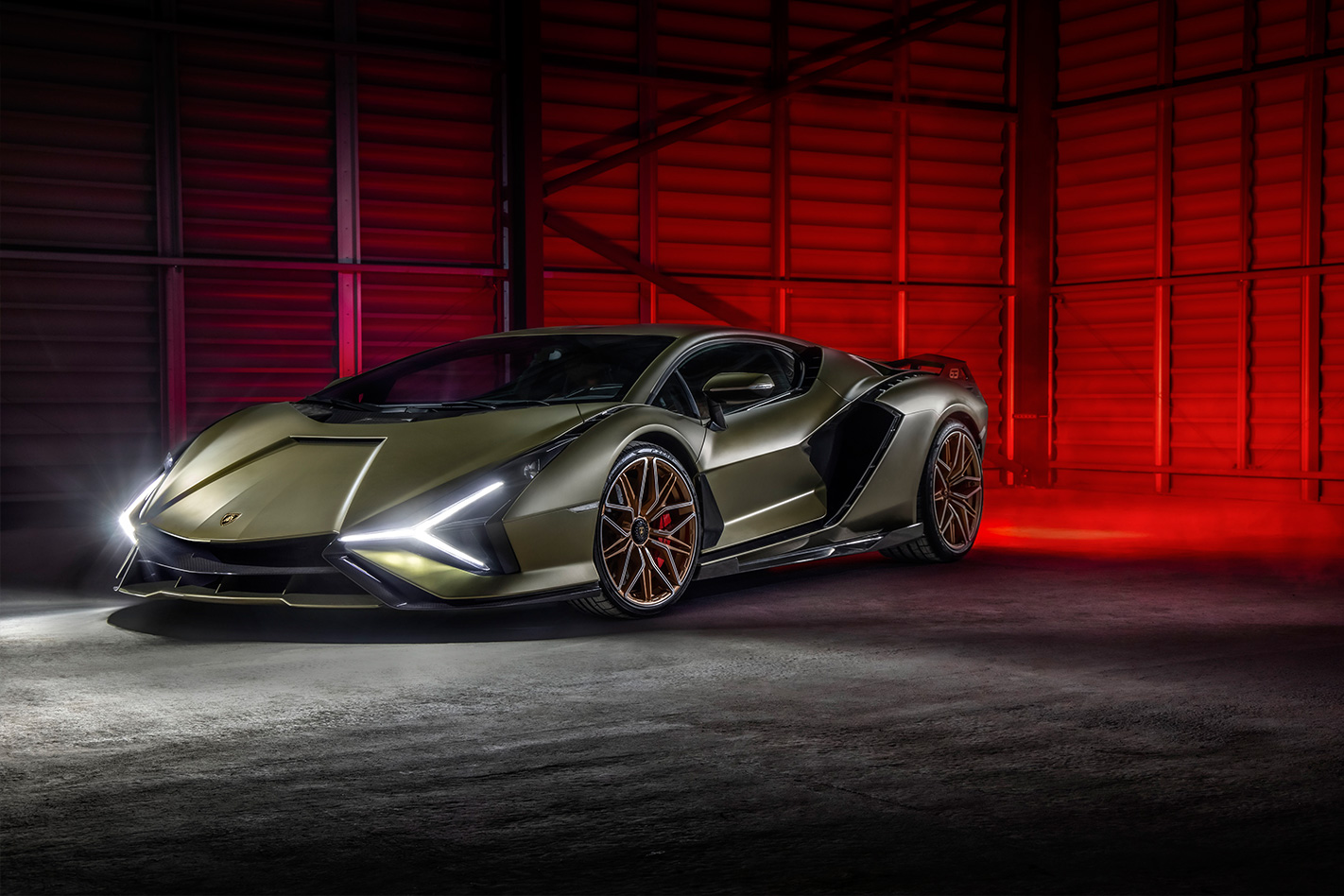
Statements of intent don’t come much more potent than this.
Though priced at an eye-watering $3.9 million plus tax and to be built in limited numbers – just 63 coupés will come out of Sant’Agata Bolognese, with 19 Roadster models scheduled for production later this year – the Sián is not simply a rich person’s plaything. The Sián – the name means ‘flash’ or ‘lightning’ in the Bolognese dialect – is a serious car, built for a serious reason.
“With this car we set ourselves the challenge of creating the best hybrid solution for a Lamborghini super sports car to provide us with the first step of our electrification strategy,” says Lamborghini chief technical officer Maurizio Reggiani. “With Sián we are defining our route to innovation.”
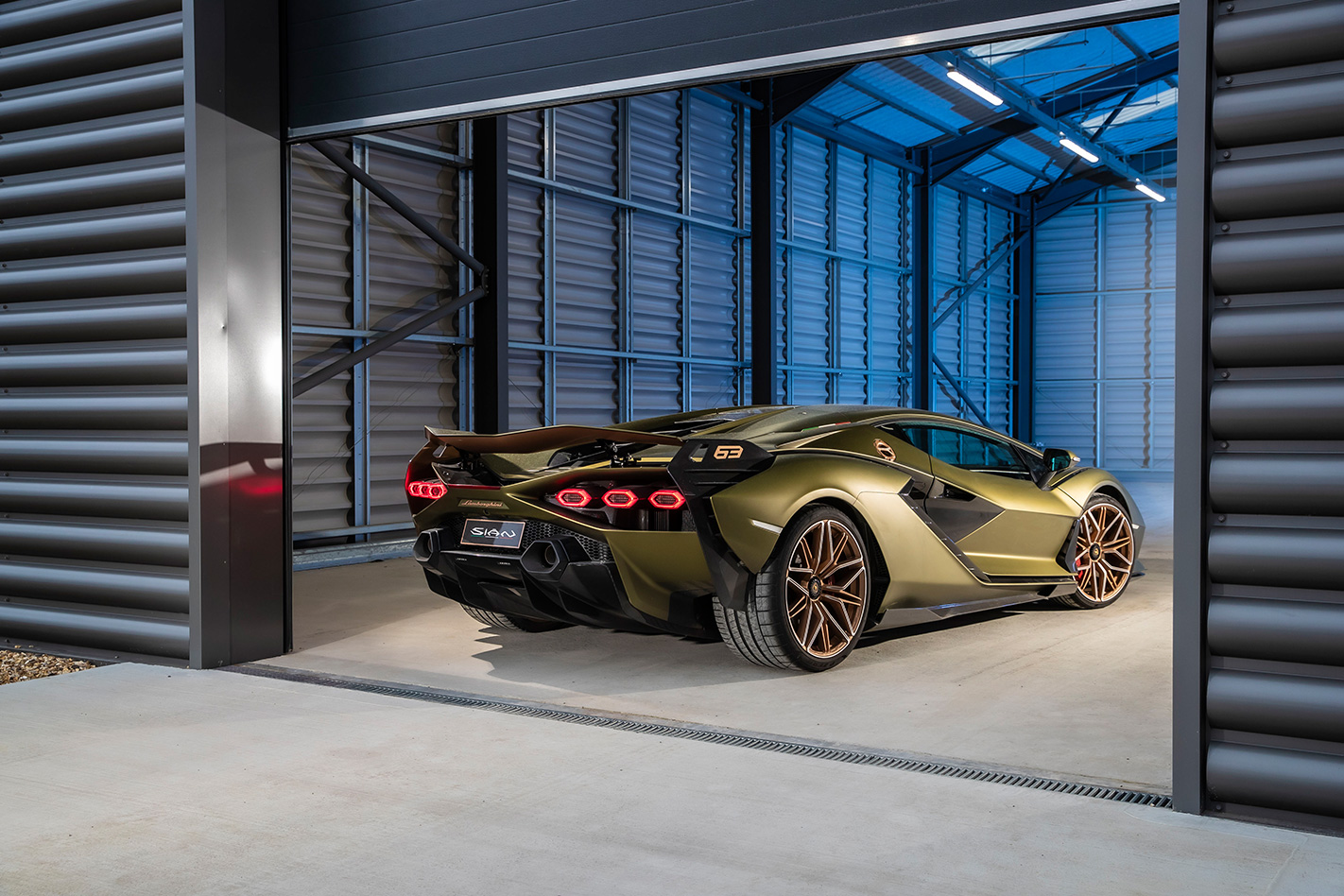
Of course, hybrid supercars are nothing new: the Porsche 918, McLaren P1 and Ferrari LaFerrari all appeared back in 2013. So, the Lamborghini’s Sián might seem a little late to the party, but it brings a technology that is tipped by some to be the next big thing for high-performance hybrids – the supercapacitor.
In simple terms, a supercapacitor stores electrical energy. But unlike the lithium-ion battery that’s now an integral element of hybrid powertrains built by everyone from Ferrari to Toyota, a supercapacitor doesn’t bind that energy in a chemical reaction. Instead, the supercapacitor stores electricity in a static state. That means it can be recharged up to 1000 times faster and can hold more power than a typical lithium-ion battery of the same size. A supercapacitor’s storage capacity degrades less over time, and it can operate at temperature extremes most battery chemistries don’t like. What’s more, supercapacitors can now be 3D printed, making them easier to package in a car than a bulky battery pack.
What’s the catch?
There are several. Supercapacitors lose 50 per cent of their charge in 30 to 40 days, ten times more than a lithium-ion battery over the same period, so they offer relatively poor energy density. Supercapacitor cells also have a lower voltage than lithium-ion ones. And supercapacitors are much more expensive than batteries. Nevertheless, Toyota has been experimenting with supercapacitor hybrid powertrains, and in 2019 Tesla spent US$218 million acquiring supercapacitor maker Maxwell Technologies. Both clearly believe there’s something in the technology.

The supercapacitor in the Sián sits right behind you, in the bulkhead between the cabin and the engine compartment. Three times more powerful than a battery of the same weight, three times lighter than a battery producing the same power, it feeds a 25kW e-motor that’s mounted on the side of the Sián’s seven-speed automated manual transmission.
As e-motors go, it’s small beer – the axial flux e-motor mounted between the engine and the transmission of the McLaren Artura pumps out 70kW; the similar unit in the Ferrari SF90 makes 117kW. But the Sián’s hybrid system is designed for a very different task. The e-motor is not there to drive the car on electric power. It’s there simply to provide rapid torque fill at speeds up to 130km/h.

One full-bore rush through the gears in Corsa mode – the most aggressive of the Sián’s three drive modes – quickly reveals one key benefit of the system. Gone is the brutal, shovel-to-the-back-of-the-head shift-shock that is the hallmark of the Aventador; the result of the seven-speed transmission having just a single clutch, which requires the ignition being shut-off during shifts to manage the torque loads. Instead, the Sián slips succinctly from one gear to the next, even with your right foot on the floor and that big V12 screaming. With the central touch screen display in vehicle mode, you can see the supercapacitor feeding energy into the system on every gear change.
Even noodling around in regular Strada mode, with the transmission set to automatic, the Sián feels smoother, more compliant than you expect. Lamborghini says the system makes the Sián more than 10 percent quicker in the lower gears than the non-hybrid Aventador SVJ, increasing traction force by 10 percent in third gear and shaving 0.2 seconds from the 30km/h to 60km/h acceleration time. In higher gears the e-motor increases traction force by more than 20 percent, clipping 1.2 seconds from the 70km/h to 120km/h acceleration time.
It might feel slightly more sophisticated than the Aventador, but the Sián is still as stupendously loud, fast and in-your-face as you’d expect a big-banger Lambo to be. The ride is taut and uncompromising, the steering meaty and direct. It’s rawer and edgier than any modern 12-cylinder Ferrari: Maurizio Reggiani’s chassis engineers may have dialed out the whiff of menace that once lurked in the Murcielago and the Diablo but, with all that engine and transmission behind you, this is still a car you treat with more respect than you would a Ferrari 812 Superfast. Good news: The brakes have an authority that was sorely missing in the very first Aventadors.
The heart and soul of this Lamborghini remains that glorious naturally aspirated V12. Now fitted with titanium intake valves, it has been tweaked to deliver 577kW at 8500rpm, the highest output ever from a Lamborghini engine. The hybrid system has done nothing to diminish the crisp sensitivity of the V12’s throttle response at high speed, nor its snarling, crackling, shock-and-awe soundtrack, unmuffled by turbochargers. The Sián might hint at Lamborghini’s future, but its heritage is unmistakable.
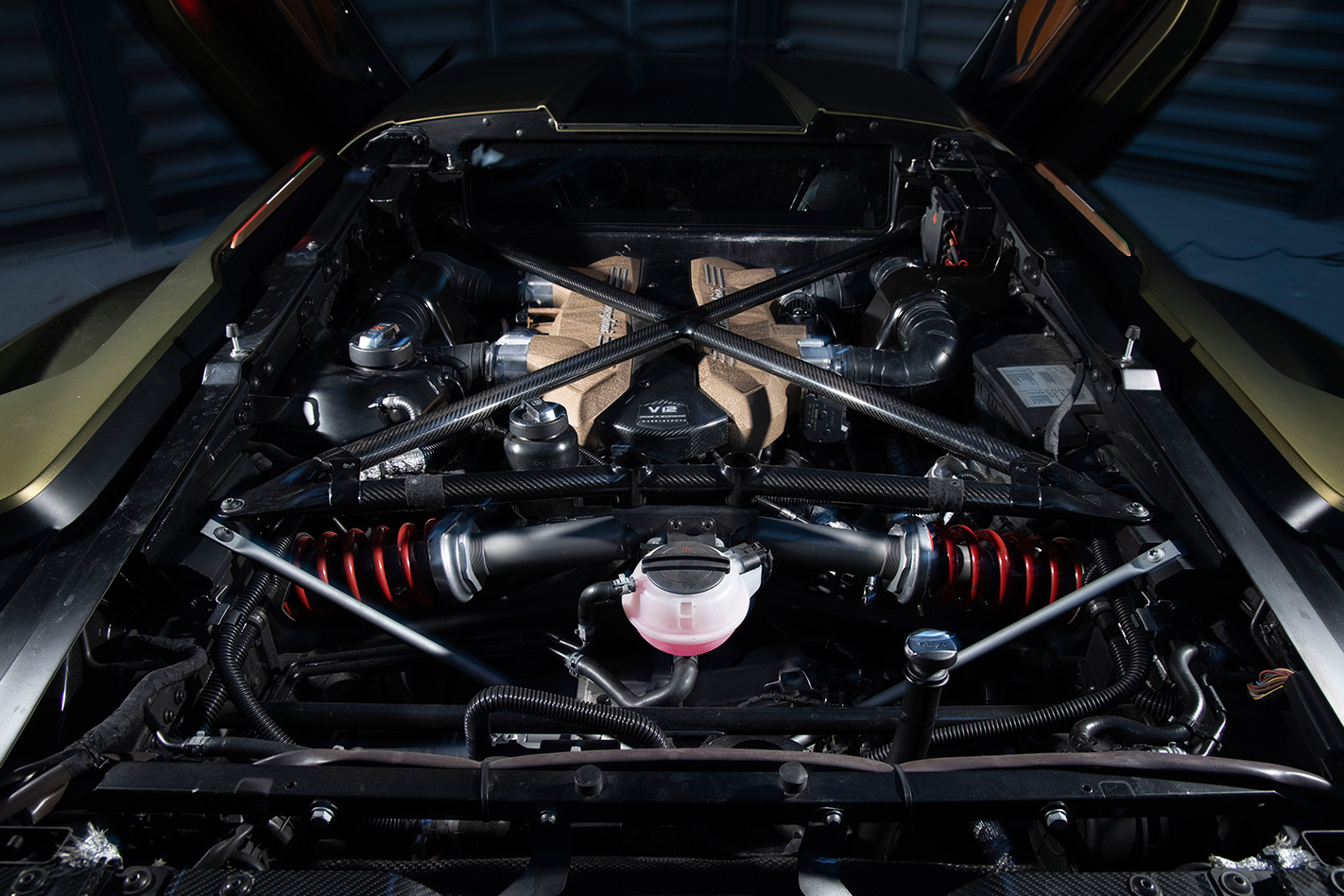
There’s heritage, too, in that extraordinary bodywork. The Sián may seem a little cartoonish in photos, but in person – particularly in the satin Verde Gea green with gold wheels of the press car – it has astounding street presence. It looks longer, lower, wider and more aggressive than just about anything else on wheels. A worthy successor then to the Countach, complete with subtle nods to Lamborghini’s touchstone car; from the diagonal lines extending back to the front scoop that echo the Countach’s front graphic, to the indent in the roof that recalls the ‘periscopio’ tunnel for the original Countach’s central rearview mirror.
A full-width wing tucked into the rear bodywork automatically motors clear to one of two downforce positions, its outer edges flush with the fins that sprout from the top of the rear guards and slice downwards to the rear diffuser. Four small tabs in the bodywork between the trailing edge of the engine cover and the leading edge of the wing are active cooling vanes that automatically open to provide additional venting when they sense high temperatures in the engine compartment.
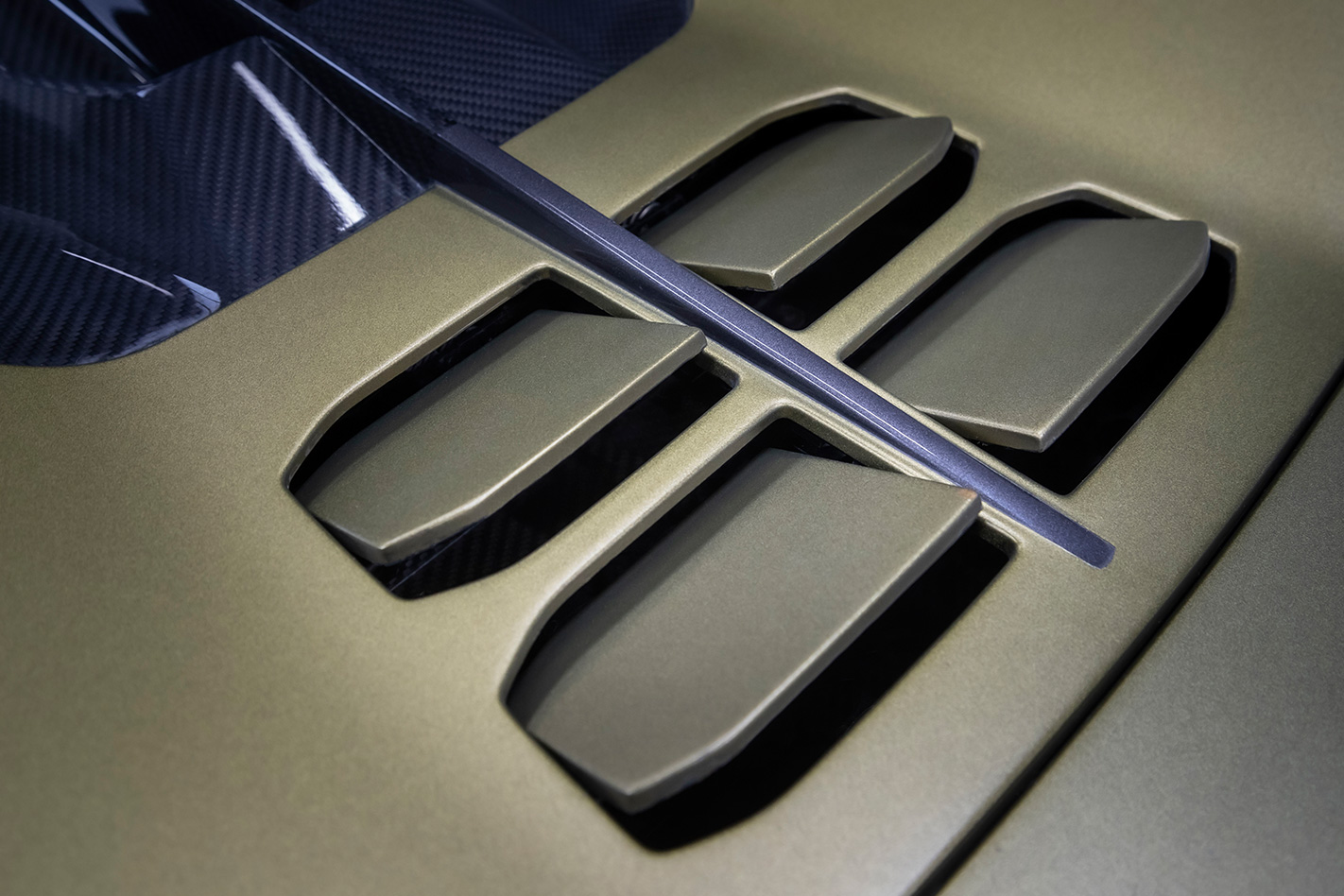
While there are plenty of recognisable Aventador bits and pieces in the interior, redesigned panels on the doors, a slightly recontoured dash with different trim, and a new centre console with fewer switches and a portrait format touch screen endow the Sián cabin with a more modern and more luxurious ambience. Also new is a small electrochromic glass panel in the roof that switches between opaque and clear at the touch of a button.
The coolest pieces in the Sián’s interior, however, are probably the four air vents in the dash. They don’t look special. What’s special is how they’re made. They are 3D printed, as is the fuel cap. A technology widely used in Formula 1, 3D printing offers carmakers like Lamborghini the ability to make custom components at low volumes without the need for expensive tooling.
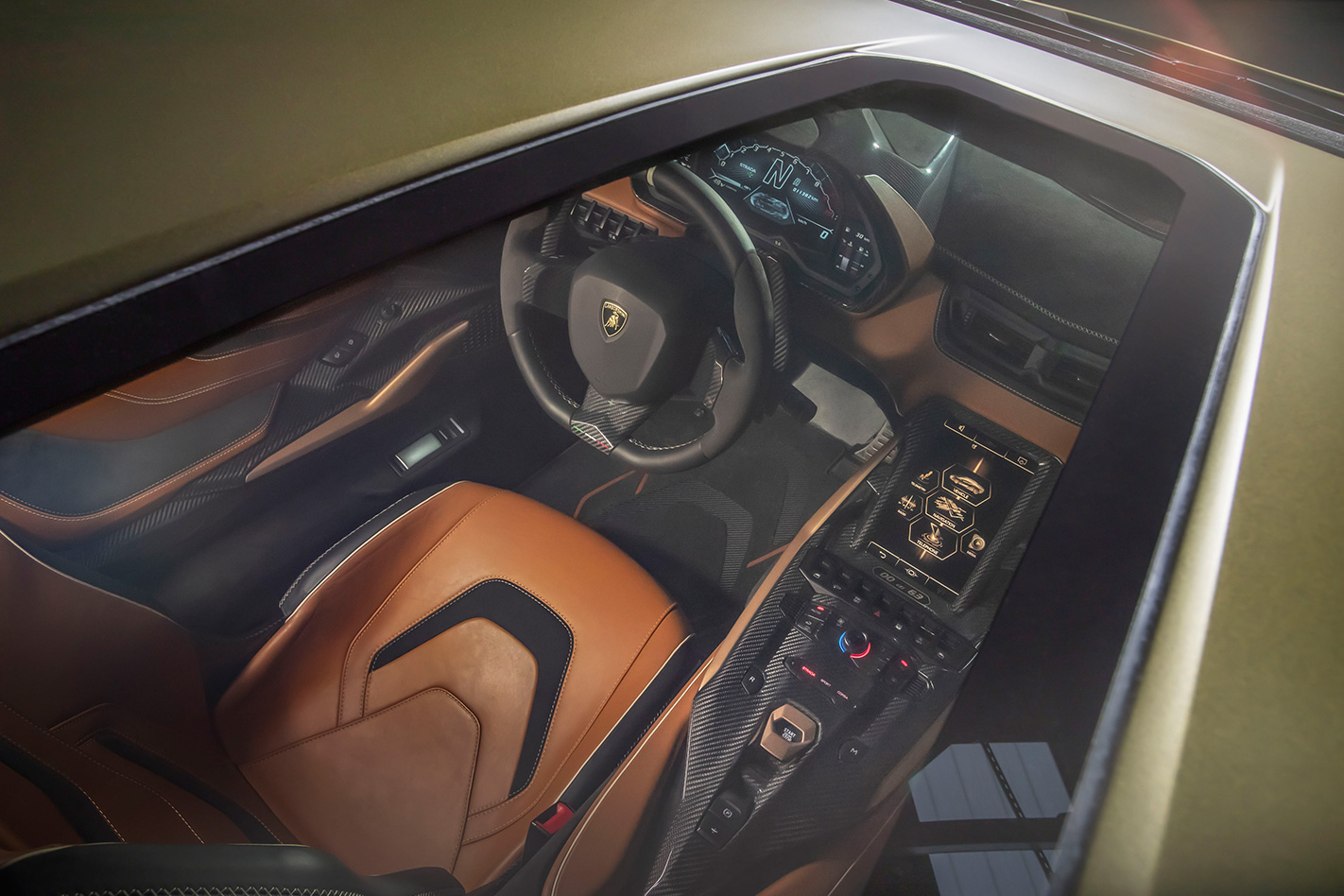
You could argue the Lamborghini Sián’s supercapacitor hybrid system simply cleans up the drivability issues that afflict the Aventador because of its single-clutch automated manual transmission, but that would be selling it short. With the replacement for the Aventador now said to have been pushed back to 2024 amid real questions as to whether its charismatic and thrilling naturally aspirated 6.5-litre V12 is able to meet new emissions and fuel consumption targets, the Sián asks a fundamental question about the future of Italy’s most consistently extravagant and extreme supercar maker: can a hybrid be a real Lamborghini?
Make no mistake, the Lamborghini Sián is unquestionably a tentative step towards electrification for a company that has built its reputation on big, loud, powerful internal combustion engines. But it’s a promising one, indeed.


